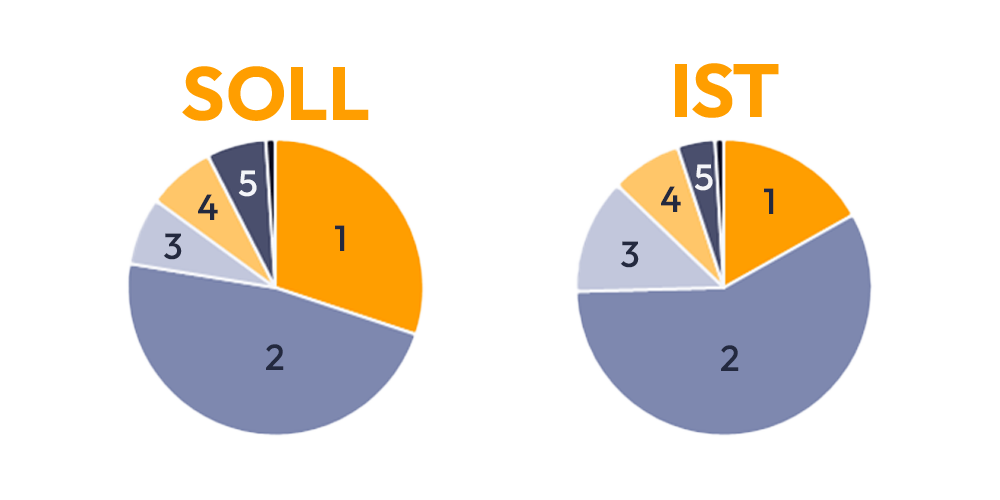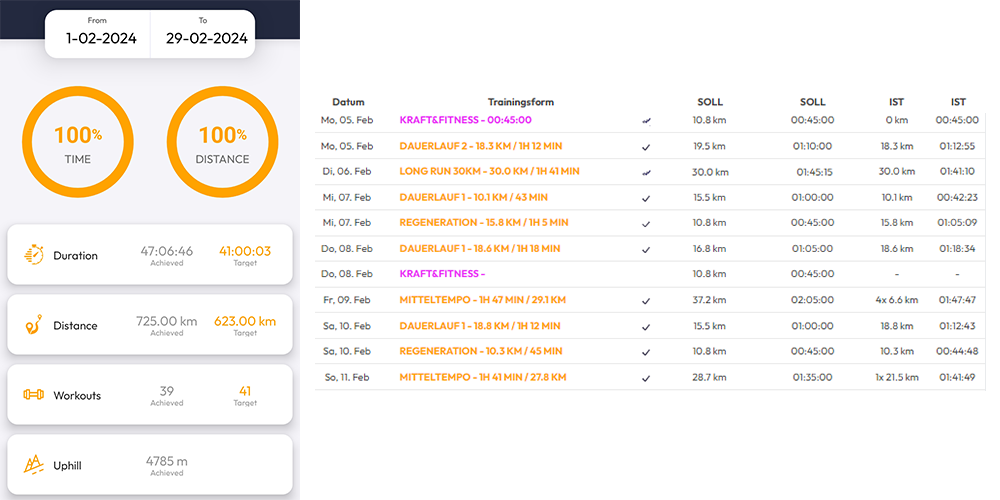Matthias Kyburz, the eight-time World Champion in Orienteering, is preparing for the Paris Marathon with the assistance of running.COACH and running.COACH co-founder Viktor Röthlin. The goal: a time of 02:08:10 – which is the Olympic time limit. We accompany Matthias not only in planning his training schedule but also aim to delve into the challenges, the training and performance developments, and provide exclusive insights into his daily training routine on this blog.
From the forest to the road and a time of 02:08:10 – what does that mean?
Kyburz has proven several times in the past that he is a fast runner – even though the training and physical demands of an orienteer are similar to those of a marathon runner, they are not quite the same in the end. For example, orienteering runners very often run on uneven, varied terrain, which results in greater activation and flexibility of the ankle, foot and leg muscles. This also requires greater use of the stabilizing muscles to enable balance and quick changes of direction.
The differences between marathon and orienteering extend beyond muscle work and also involve metabolism. Marathon runners aim for efficient energy utilization to tackle long distances at a consistent intensity. Orienteers, on the other hand, must utilize their energy much more flexibly. Depending on the competition situation and distance, which can vary from 12 to 100 minutes, they switch between aerobic and anaerobic energy sources. This adaptability is essential to optimally respond to the varied terrain challenges and dynamic demands of the race.
Specifically, for Kyburz’s training:
- Transferring training from the forest to the asphalt, aiming to reduce “unnecessary” muscle mass and get the muscles used to the monotonous marathon movements, including the heavier impact on the musculoskeletal system.
- Developing the ability to efficiently utilize energy with a significant fat-burning component at a high pace over a long duration. In other words, engaging in long runs at race pace to optimize energy supply through fat burning.
Changing from an orienteer to a marathon runner is like trying to retrain a talented jazz musician to become a classical pianist within a few months. Therefore, metabolism and muscles no longer need to rapidly switch between different “rhythms” but rather adhere to the strict and predetermined flow of the marathon.
Matthias Kyburz on the differences between training with running.COACH and his usual training in orienteering.
Matthias Kyburz’s planned training regimen
To adapt to the new stressors of long, monotonous movements on asphalt, Kyburz’s training is structured as follows:
- Multiple long runs per week, often quite intense, to accustom the body to the marathon-specific conditions mentioned above.
- In addition to the intense long runs, there are typically 1-2 other (long) intensive sessions per week, such as two medium-paced runs in the example week below.
- Two strength training sessions are also part of the fixed training program for Kyburz. In his case, these are crucial as the musculoskeletal system needs to adapt to the new and long form of exertion.
In comparison to most training plans generated by running.COACH, Kyburz’s requirements deviate from the standard plan as he needs to accustom himself more to a constant and high pace rather than focusing solely on extensive training volume. Accordingly, more long and intensive runs can be planned than is normally preferred by the algorithm.
Viktor Röthlin on the key points of the training and the adjustments he made manually.
The training month of February
The training month of February was extremely successful. Kyburz was able to meet the targets well. Due to some additional distance and regeneration runs, the training duration and distance were even slightly longer than planned.

The adjustments mentioned by Röthlin regarding the intensities can also be observed from the above graph. The numbers 1 – 5 represent different intensity zones. It is evident that in February, Kyburz trained somewhat less in the lower intensity zones (1+2) and instead focused more on zones (3+4 or “Tempo” and “Threshold”) than the original plan had envisaged.
It should be noted that training in Zone 3-4 over 35 kilometers can start at a pace of 3:35 min/km and escalate to a pace of 2:53 on the last kilometer.

Outlook for the coming weeks
The second training block is slowly coming to an end, and soon the third and most intense part of the preparation will begin. The program includes, for example, the Swiss Half Marathon Championships (not in a fully recovered state), as well as additional long runs and interval training sessions aimed at optimally preparing both the mind and the legs for the 42 kilometers ahead.
Viktor Röthlin comments on the upcoming training weeks with the transition into the third training phase.
Those who wish to accompany Matthias on his journey and receive regular updates are best advised to follow us on Instagram.
Instagram running.COACH
Instagram Matthias Kyburz
Those who want to train with running.COACH like Matthias Kyburz can test the program for two weeks free of charge.


